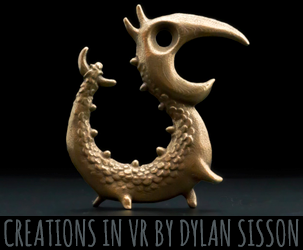


Oppenheimer: The Clarity of the Fractured Lens
by Maria Elena Gutierrez
J. Robert Oppenheimer (Cillian Murphy) is one of the most complex characters to grace the silver screen in many years. It is too easy to say that Christopher Nolan’s monumental biopic “Oppenheimer” portrays him as a genius because, as his rival US government official Lewis Strauss (Robert Downey Jr.) observes: “Genius is no guarantee of wisdom. How could this man who saw so much be so blind?”
This difficult question lies at the very heart of “Oppenheimer.” On the one hand, the film shows us a brilliant scientist who not only navigates the unfathomable realm of quantum physics, but learns Dutch in just six weeks in order to deliver a lecture on the subject. An incredible feat, about which Oppenheimer says simply: “I wanted to challenge myself.”
Oppenheimer’s genius brings him extraordinary insight into the workings of the universe. As his friend, literary professor Haakon Chevalier (Jefferson Hall), observes: “Robert, you see beyond the world we live in.” For Oppenheimer, this lofty cosmic realm co-exists with his earthbound reality. Oppenheimer’s real talent is that he is able to stand with a foot in each world, straddling the border between the two.
Christopher Nolan invites his audience to share Oppenheimer’s supernatural vision by peppering the film with extraordinary images of exploding stars, spinning atoms and all manner of esoteric phenomena that dazzle the eyes while defying description. Is Oppenheimer’s visionary ability a blessing or a curse? The jury is out. Oppenheimer is as likely to appear haunted by these cosmic phantoms as he is inspired by them.
Accompanying Oppenheimer’s visions – and magnificently underpinning the entire film – is a gorgeous score by Ludwig Göransson. Shifting elegantly between lyrical strings and discordant synthesizers, it seems to take its cue from the words spoken by physicist Niels Bohr (Kenneth Branagh): “Algebra’s like sheet music. The important thing isn’t can you read music, it’s can you hear it. Can you hear the music, Robert?” Oppenheimer’s reply is, of course: “I can.”
Nolan’s use of visual and aural metaphor enables him to explore the contradictory aspects of Oppenheimer’s personality. He is clearly passionate about the science that consumes his attention, yet it is a cold passion. Meanwhile, his wife, Kitty (Emily Blunt), is driven by a more fiery human passion that prompts her to throw glassware across the room. She is the one who rages while Oppenheimer sits quietly, nonreactive, floating through a world in which he is never entirely present.
Cillian Murphy consistently brings out this aspect of Oppenheimer’s persona, creating a fluid, almost androgynous character who at times appears passive, yet who is driven by a ruthless determination to succeed. Although he appears easily dominated by authority figures such as President Truman (Gary Oldman) or Manhattan Project director Leslie Groves Jr. (Matt Damon), his steely conviction always prevails.
Oppenheimer’s meeting with Truman sheds light on another contradictory aspect of his story. For all his genius, Oppenheimer is merely an enabler – the creator of this ultimate weapon, yes, but ultimately a tool of the politicians who have decided that such a weapon is necessary, and who provide the resources that allow it to be built. Oppenheimer himself tries to distance himself from the responsibility: “It was hardly my invention,” he tells Truman. Yet, unwilling or not, it is Oppenheimer who will be forever regarded as the father of the atomic bomb.
Christopher Nolan’s screenplay was based on the book “American Prometheus: The Triumph and Tragedy of J. Robert Oppenheimer” by Kai Bird and Martin J. Sherwin. Like Prometheus in the original Greek myth, Oppenheimer ends up being hunted – in this case by the United States Atomic Energy Commission (AEC) who, in 1954, subjected Oppenheimer to a four-week hearing that resulted in his security clearance being revoked, but which has since been judged to be a “flawed process.”
The Prometheus myth is directly referenced in the film’s opening caption: “Prometheus Stole Fire from the Gods and Gave It to Man. For This, He Was Chained to a Rock and Tortured for Eternity.” The mythical references continue in other ways, notably the moment when, upon witnessing the Trinity test at Los Alamos, Oppenheimer speaks a line from the sacred Hindu text “Bhagavad Gita,” giving it a context that makes it arguably one of the most famous quotes of the 20th century: “Now I Am Become Death, The Destroyer Of Worlds.”
This is the second time Oppenheimer utters these immortal words in the film. He first quotes the text in an earlier scene with psychiatrist Jean Tatlock (Florence Pugh), just after they have made love. She takes the “Bhagavad Gita” from his bookshelf and challenges him to translate the Sanskrit text – which Oppenheimer does with ease.
Sexy, earthy and primordial, Tatlock appears in direct opposition to Kitty Oppenheimer, an intelligent woman who must conform to society expectations of the era. A dutiful housewife and mother, she is also an alcoholic with a quick temper. Both women are captivating in vividly different ways, with hidden strengths lurking beneath the skin. During the AEC hearing, Kitty reacts to the verbal attacks of prosecutor Roger Robb (Jason Clarke) with a feistiness that few of the male interviewees can match.
At the climax of “Oppenheimer,” the film’s mythic dimension is stunningly juxtaposed with the mundane. Throughout the film, Nolan presents the ongoing rivalry between Oppenheimer and Strauss, who constantly questions Oppenheimer’s actions and intentions. Specifically, Strauss is convinced that Oppenheimer and Albert Einstein (Tom Conti) were bad-mouthing him during a conversation that Strauss witnessed from a distance, but did not hear. Recognizing this petty paranoia, a Senate aide (Alden Ehrenreich) suggests to Strauss: “Since nobody knows what they said to each other that day, is it possible they didn’t talk about you at all?”
In the last moments of the film, Christopher Nolan reveals that this is indeed the case. During the conversation, Oppenheimer asks Einstein if he recalls their early concern that testing an atomic bomb might “start a chain reaction that would destroy the entire world.” Einstein does indeed remember, and asks Oppenheimer: “What of it?” In one of the film’s killer blows, Oppenheimer replies: “I believe we did.”
Throughout the film, Oppenheimer associates this feared chain reaction with a simple image – splashing raindrops causing ripples to spread out across water. The raindrops first appear near the very beginning of the movie, in a montage that foreshadows all that is to come – including the dropping of the atomic bomb itself. It is a subtle and striking visual metaphor, notable both for its clarity and because of the way it uses natural beauty to portray man-made devastation.
Balancing Oppenheimer’s fear of annihilation is his conviction that the atomic bomb represents the ultimate deterrent against conflict. “When the world learns the terrible secret of Los Alamos, our work will ensure a peace mankind has never seen,” he tells his team at Los Alamos. Unfortunately, there is a catch: “They won’t fear it until they understand it, and they won’t understand it until they’ve used it.”
This assertion of Oppenheimer’s is yet another gut punch – and perhaps the clearest insight Nolan offers into his protagonist’s conflicted heart. Oppenheimer believes the atomic bomb can be a force for good … but only if you demonstrate its lethal efficiency first.
The film’s closing scene between Oppenheimer and Einstein is as elegant as it is devastating. In it, Nolan demonstrates his mastery over cinematic structure. In particular, he reveals his ability to manipulate time – a skill that first became evident in his 2000 masterpiece “Memento.” The subject matter of Oppenheimer’s and Einstein’s conversation becomes the film’s “Rosebud,” an essential truth that is kept from the audience until the very end. In this way, through a bravura demonstration of screenwriting, directing and editing skill, Nolan sets Strauss’s small-minded obsessions against Oppenheimer’s world-shaking passion, while expertly steering his audience through an ever-expanding labyrinth of narrative strands.
Nolan’s ability to flip us back and forth through time and memory is more than just a cinematic trick – it speaks directly to the film’s themes and also plays its part in conjuring the mood of the era. Oppenheimer’s story plays out in the age of the avant-garde, of Pablo Picasso and T. S. Eliot’s “The Waste Land.” This is a world of fragmentation, in which we see reality from multiple viewpoints simultaneously.
This is the greatest miracle of Christopher Nolan’s “Oppenheimer.” He shows us the endless complexity of the universe through a fractured lens. In doing so, we end up seeing the world with more clarity than we ever have before.
Dr. Maria Elena Gutierrez is the CEO and executive director of VIEW Conference, Italy’s premiere annual digital media conference. She holds a Ph.D. from Stanford University and a BA from the University of California Santa Cruz. VIEW Conference is committed to bringing a diversity of voices to the forefront in animation, visual effects, and games. For more information about the VIEW Conference, visit the official website: http://viewconference
Subscribe to the VIEW Conference YouTube channel:
https://youtube.com/c/viewconf
Facebook: https://facebook.com
YouTube: https://youtube.com/c
Twitter: @viewconference
Instagram: view_conference
VIEW Conference newsletter: Sign up here
#viewconference2024































